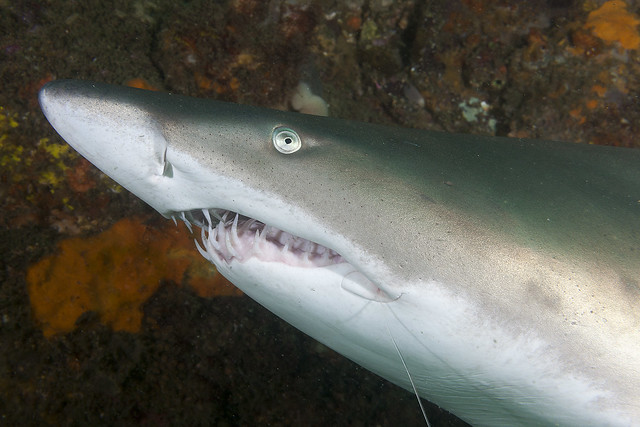The Right Lens to take to Sydney Dive Sites
Luxury problem number one I am facing is which lens to mount on my digital camera before going on a dive. Unlike in land photography, I can’t take the lens off again and replace it with a different one, since the whole camera is encased in a water-proof housing. So, while on land I can switch between a wide-angle lens for capturing a lovely landscape to a telephoto lens for bird photography (birds with wings, it’d be inappropriate to sneak up on the other kind like that), I can’t pull an in-photoshoot switcheroo when submerged. Taking the camera out of the housing to take the macro lens off would turn a piece of high-end electronics into electro-waste. The camera would decease. Not be with us anymore. Taking an eternal nap.
So, since we don’t want that, and have to make this pre-dive lens-decision, which lens is the right one then for which dive site? Let’s look at a few popular Sydney dive spots:
Bare Island
Probably THE bestest dive site in the greater Sydney area, by far, so that one of my friends, let’s call him ‘Anthony’ only wants to dive there, nowhere else. There is a historic military installation on the island, so it’s not completely bare, but there is certainly no bear there. Instead, the waters are thriving with high-biodiversity marine life. I especially enjoy the nudibranchs there, and the Canon 100 mm f2.8 macro lens works well for taking pictures of these. But equally nice are the eastern blue gropers (which are really wrasses, not gropers) populating the area. These fish are about a meter long and like to hang around divers, because sometimes sea urchins carelessly walk into divers’ knifes, and the gropers/wrasses like to eat these then. These fish have a lot of character and a striking blue body coloration – they are best photographed with a wide-angle lens like the Canon 17-40 mm.

Kurnell (Monument-Steps-Leap)
Right across the mouth of Botany Bay from Bare Island, and almost as nice (though not quite). A specialty of this dive site are the weedy seadragons. These are seahorses which mimic the seaweed in both color, texture, and lazy swimming style. These are endemic to Australia – quite a treat! The seadragons are quite large for seahorses, the largest ones about 30 cm. Too large to capture the whole animal with a 100 mm lens – I prefer to photograph them with the 50 mm f2.5 macro, although I am tempted to try shooting them with a wide-angle lens as well. In that way I could include the sea-weedy background as well. Such wide-angle close-up shots are something I’d like to experiment with more.

Clifton Gardens
Finally a dive site where I can make up my mind. This spot, in Chowder Bay on the north side of Sydney harbor, is a macro shooters heaven. Seahorses to sea, frogfish in the sand, dragonets, leatherjackets (filefish), nudibranchs, decorator crabs, all of that lives around the pylons in Clifton Gardens. And all of that is small: hence thou shall mount a macro lens, like the Canon 100 mm USM f2.8, possibly with an extension ring. With the extension ring, the lens loses the ability to focus to infinity (unnecessary for macro shooting anyway), and some depth of field, but the ring adds an extra 25% of magnification. I have had some good success shooting really small stuff with such a setup, such as tiny nudibranchs less than 3 cm in length.
Magic Point
The home of the Sydney grey nurse sharks near Maroubra, this dive site is actually populated by interesting small marine life as well, like tobies and goatfish. But, the main attraction are surely the sharks! These are very, very friendly sharks, which will stick around and come within a meter of a calm and well-behaved diver. A wide-angle lens is recommended here! I have actually photographed these sharks with the Tokina 10-17 mm fisheye lens (which only works at 17 mm for a full-frame sensor camera), the Canon 17-40 mm, and the Canon 50 mm macro. The 50 mm macro works well for close ups of the faces and tooth-studded mouths of the sharks.

These are the lenses I use – what do you do if you don’t have a Canon camera? Buy one and go back to the beginning of the article (No, Canon is not sponsoring me).